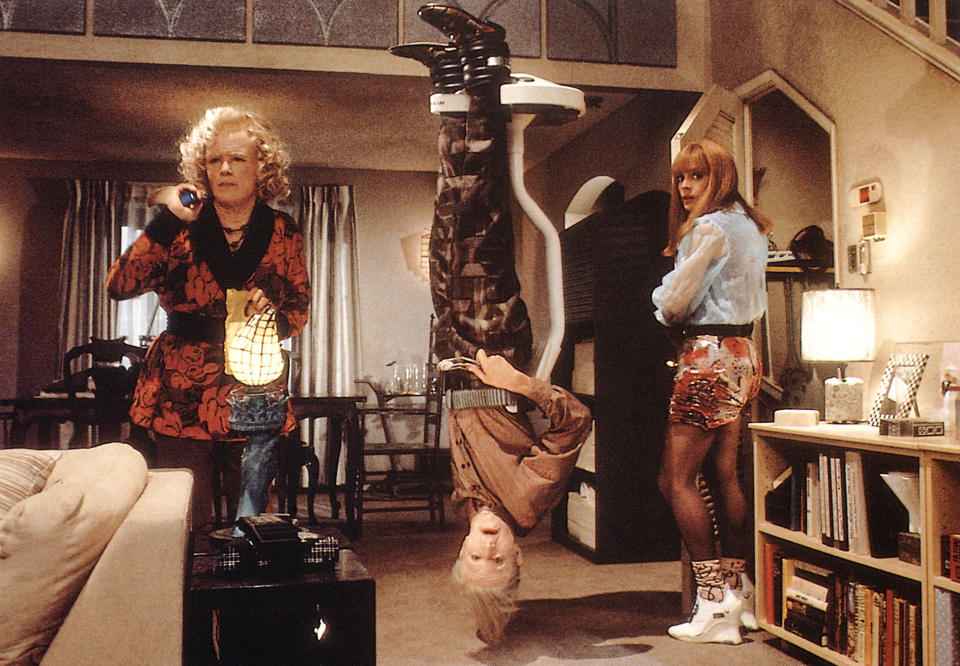Do Studios Really Expect to Own an Actor’s A.I. Double for ‘Eternity’?

Minutes after the Screen Actors Guild announced it was calling for a strike, the AMPTP (Alliance of Motion Picture and Television Producers) published a bulleted list of proposals it said SAG-AFTRA decided to leave on the table. Among them was what the studios called a “groundbreaking” AI proposal which “protects performers’ digital likenesses, including a requirement for performer’s consent for the creation and use of digital replicas or for digital alterations of a performance.”
SAG’s lead negotiator Duncan Crabtree-Ireland, not an actor himself, wasn’t impressed.
More from IndieWire
“They proposed that our background performers should be able to be scanned, get paid for one day’s pay, and their company should own that scan, their image, their likeness, and be able to use it for the rest of eternity on any project they want with no consent and no compensation,” Crabtree-Ireland said during Thursday’s press conference. “So if you think that’s a groundbreaking proposal, I suggest you think again.”
Wait, eternity…for one day’s pay? This sounds like the worst “Black Mirror” episode ever. Really, it depends which side you believe.
“The claim made today by SAG-AFTRA leadership that the digital replicas of background actors may be used in perpetuity with no consent or compensation is false,” an AMPTP spokesperson told IndieWire. “In fact, the current AMPTP proposal only permits a company to use the digital replica of a background actor in the motion picture for which the background actor is employed. Any other use requires the background actor’s consent and bargaining for the use, subject to a minimum payment.”
OK, so just more finger-pointing.
IndieWire sat down with Crabtree-Ireland following the SAG-AFTRA press conference. The AMPTP spokesperson declined to comment on any of Crabtree-Ireland’s below remarks.
One thing Crabtree-Ireland said the guild isn’t even fighting over is whether the studios should own the digital replica itself — or what he called “the data of the scan” created for the movie or show. “That’s fine,” he said.
SAG-AFTRA just wants “informed consent” for usage — and compensation for the actor.
“This is them. This is their identity. This is not something that’s meaningless or unimportant,” he said on behalf of the actors. “This is the idea that they’re giving a company the ability to recreate them in a project and do things with them that they never have done before.”
But the guild says it didn’t find much AI middle ground at all with the studios. Hell, the two sides can’t even agree on the little stuff, like whether a company can use AI for the purposes of dubbing or altering swear words for the purposes of a lighter MPA (Motion Picture Association) rating.
While Crabtree-Ireland is OK with the “editing-type functions” that today can be done without AI tools, for anything that can alter an actor’s performance, SAG-AFTRA again wants that consent. Here again, the studios are not in agreement.
“Their position is, if your digital replica has been created for that project or is going to be used for that project, they get the rights to all of those things with no consent and no compensation,” he said.

It was previously expected that any negotiations around AI would settle around the “one-picture license.” The general idea behind that concept is, if you film a scene for a specific movie, the studio can’t use that same scene in another movie or sequel without making a new deal with that actor.
“Their position is that it has to be available for use in other pictures,” Crabtree-Ireland said of the AMPTP.
The opposing groups did reach a rule for which a principal performer’s consent is required for their likeness to be used in another movie. One problem: the studios can get that consent at any time, including “at the time of initial employment.”
“Basically now what happens is, you’re an actor, you’re desperate to get into a movie, and the AMPTP says to you, ‘OK, we’ll cast you in this movie, but only if you agree that we can do a digital scan, a digital replica of you and use it in any future project that we ever create,'” Crabtree-Ireland said. “What is someone supposed to do with that?”
Further, Crabtree-Ireland says the AMPTP was unwilling to agree that dead actors should have the same rights as living ones. Whether it’s Carrie Fisher in “The Rise of Skywalker” or Paul Walker in “Fast & Furious,” studios have always gotten the consent of the estate — and paid them for it.
“That’s how it should be done. But as the technology broadens, it seems that the companies are insistent on not even following their own precedent and instead having the right to do whatever they want with people’s digital replicas,” he said. “That’s not the kind of future we want our performers to move forward into.”
Best of IndieWire
Christopher Nolan's Favorite Movies: 37 Films the Director Wants You to See
Where to Watch This Week's New Movies, from 'Mission: Impossible' to 'Theater Camp'
The Best Thrillers Streaming on Netflix, from 'Nocturnal Animals' to 'Emily the Criminal'
Sign up for Indiewire's Newsletter. For the latest news, follow us on Facebook, Twitter, and Instagram.

